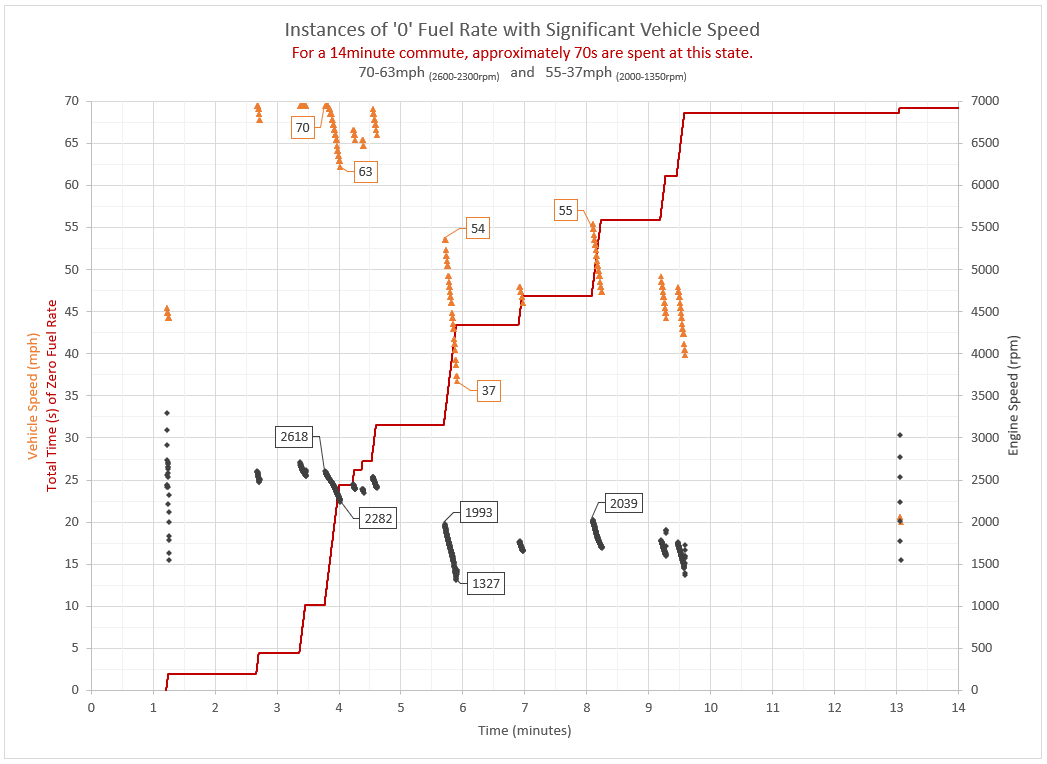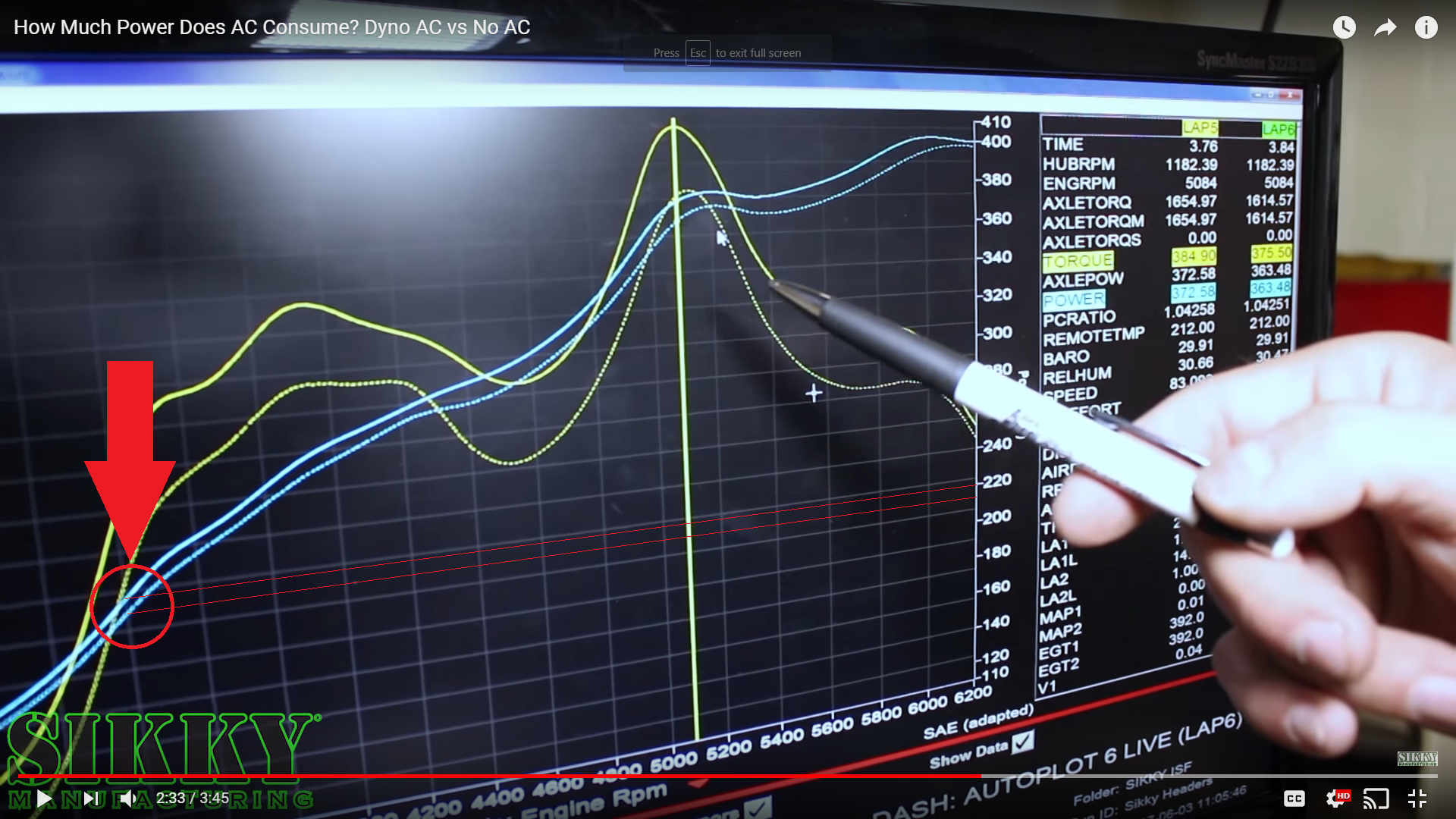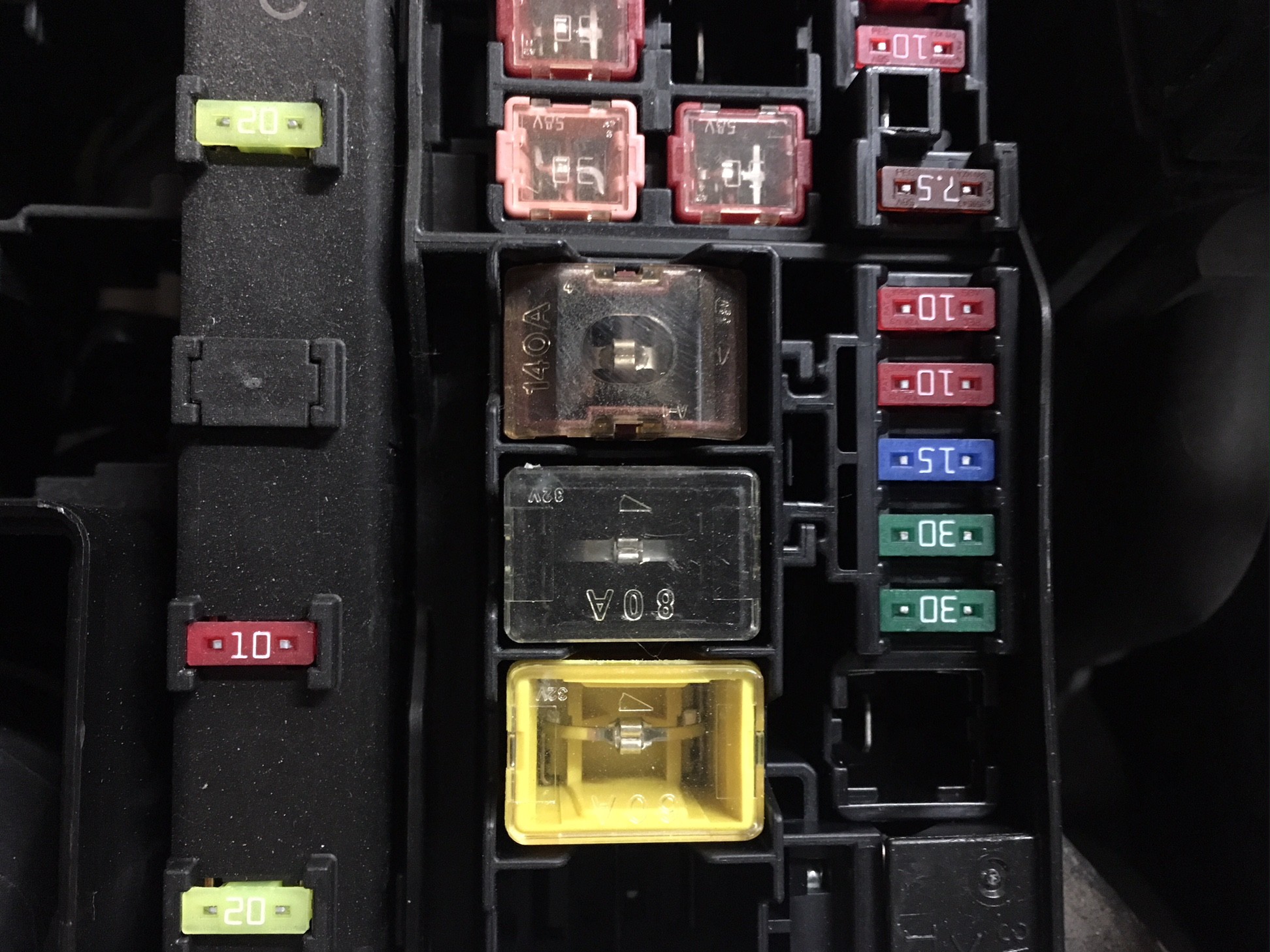This is the biggest one yet to this energy reclamation method: how valuable is it?!
I recorded data from a typical commute ( approximately 14 minutes) with speed limits ranging to 70mph. Next, I wrote a small filter in MS Excel to only show me the instances where the vehicle had speed (>0mph) and also reported '0' fuel consumption. Here it is:

And here's what it means:
TL;DR - 8% of my commute time is spent coasting to stop or turn.
At times when I was coasting from a higher speed to a lower speed (orange triangles in the plot), the engine speed is clearly tied to the vehicle speed - probably indicating that the transmission (torque converter?) is directly connecting the engine to the wheels. As shown, there are times when a complete coast does not result in the duration of the acceleration being useful for energy reclamation (although the specific fuel rates during these times are similar to idle conditions). As I left my A/C and Fan ON for this entire trip, the AC's load (as discussed previously) is significant. Meaning - a system that loads up the alternator to recover electrons does seem feasible.
Here's the problem, though:
I don't know how much energy my A/C is used. I need to know this to accurately correlate an A/C load to and electrical charging load.
SO.... let's do some online research.
The guys over at Sikky Manufacturing reported around 10HP of loss while the engine was under load.

Canada's Government estimates 1-2L of additional fuel use per 100km driven. If we take the low number and assume that's while driving at 100km/hr that means 1L/hour. Dangerously extrapolating this to my vehicle (Rav4, averaging 25mpg in the summer) means about 0.26gallons, driving at 62mph, for an hour. The guys over at ecomodder.com use the conversion that 1 gallon (US) is approximately 33 kWh.
Taking this all back together: 8% of my commute time could be energy recovering; my one-way commute (rounded up) is 0.25 hours. Therefore, 8% of 25% of 33kWh = 0.66kWh which is approximately 2,376kJ of energy. If this was to be evenly collected over 70 seconds: ~34kJ/s = 3.4kW = 4.5HP. Coincidentally, if I had used the higher 2L/hour metric it works out to be the same as what Sikky Manufacturing was estimateing around 10HP.
What rate can I actually reclaim energy at? Here's the main alternator fuse on my vehicle:

It's clearly rated to 140A. Let's say I COULD pull 140A at 12VDC under these situations: 140x12= 1.6kW rate. This is about half the rate of energy seemingly available.
Never the less, 70 seconds at 1.6kW at, say, 90% DC-DC efficiency charging a LiPo battery is 0.28kWh (280Wh). That's the equivalent of completely charging this Greenworks 4.0Ah battery up during a morning commute [if it could actually charge at that rate ] !!

(image courtesy of Amazon.com)
Finally, let's convert that 0.28kWh to my equivalent residential mains electricity cost:
1kWh = $0.135
0.28kWh = $0.04/commute savings! = 1 free McDonalds Coffee nearly every month.
(p.s. - someone can check my math, if they'd like)
 Michael
Michael
Discussions
Become a Hackaday.io Member
Create an account to leave a comment. Already have an account? Log In.